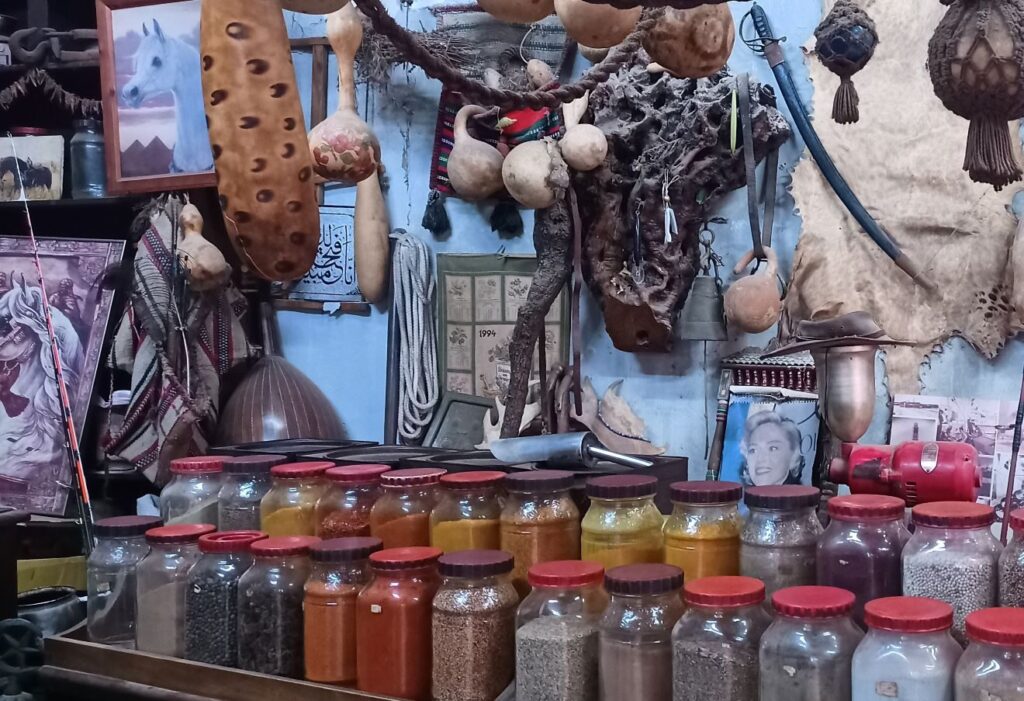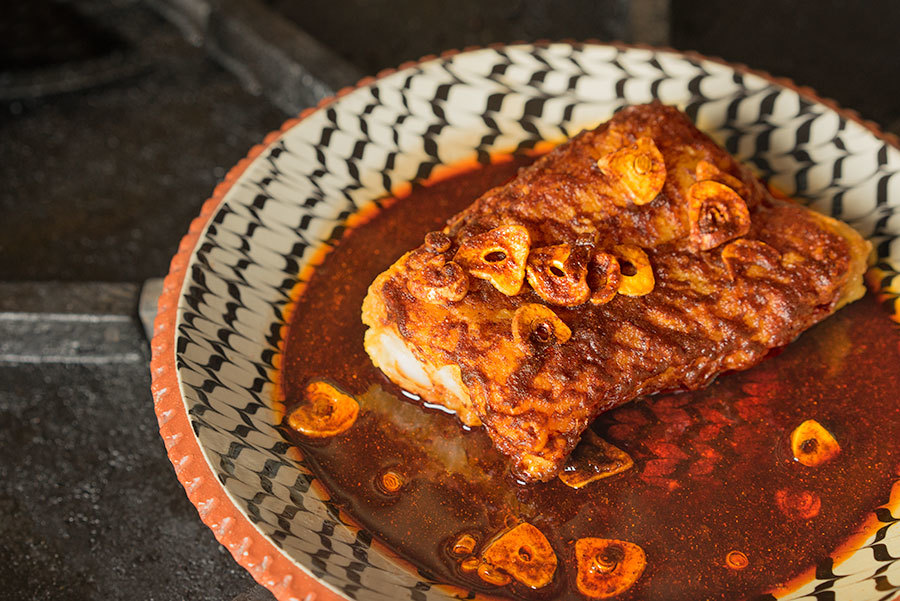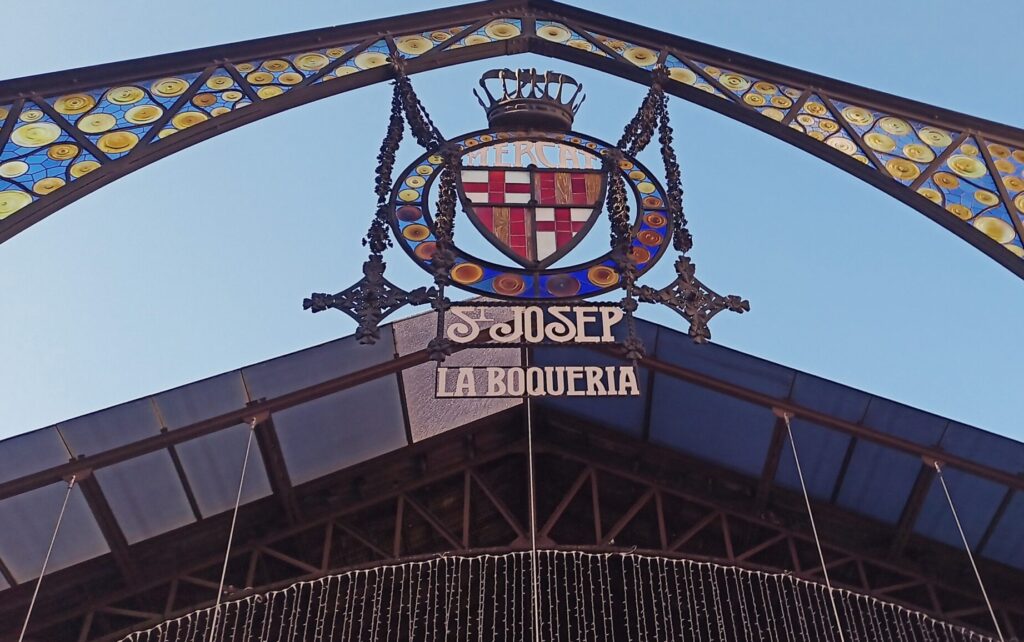Breaking bread in Palestine
Packing my bag, I slipped in a freshly baked loaf made with various seeds, oats and freshly milled flours of ancient grains grown nearby…to share with my daughters’ com-pan-ions: those with whom one shares bread.

The day before I leave for Palestine, news breaks about exciting relics found in a cave in the Rhône, quite near where I live. This find is significant as it not only proves cohabitation between Neanderthals and modern humanoids, it suggests they may have broken bread together. The creative Neanderthals were using grains, grasses and pulses in a fairly elaborate process to ultimately bake a sort of bread. Wow! This changes prior notions of prehistory significantly, to now know that in the late Epipaleolithic era, our ancestors were already cooking and baking grains, ages before the hunter gatherers or the first established agricultural communities. Pondering this, I research prehistory in the Levant and find that relics of Neanderthals, living alongside modern humans 200,000 years ago, were also discovered in the Shuqba cave at Ramallah, the very town where I’m headed! What a coincidence.
Those with whom one shares bread.
The significance escaped me when, packing my bag, I slipped in a freshly baked loaf made with various seeds, oats and the freshly milled flours of ancient grains grown just an hour north of me, in Bras. I wanted to share my bread with my daughters’ housemates and companions. Com-pan-ion, those with whom one shares bread.
Human history officially marks the the beginning of civilisation when we first shared communal ovens, which happened in the Levant. The hearth, a fire, remains the place where we sit and share, since the dawn of humanity. The ancient Mediterranean diet from the Levant is still regarded today as the healthiest diet on the planet. Mediterranean cuisine remains seasonal, defined by the local agriculture and community’s culture. It includes a lot of pulses and grains (chickpeas, fava beans, wheat berries, lentils, semolina), nuts and seeds (almonds, pine nuts, walnuts), leafy greens (jute mallow, spinach, chard, wild greens and herbs), fresh salads and vegetables (tomatoes, onions, cauliflower, eggplant, spinach, chard etc.), fruits (dates, figs, pomegranate, citrus, olives), a little meat and lots of fermented dairy and pickled vegetables. (The cucumber, tomato, eggplant, chilli, sweet peppers and corn all came across from the Americas ages ago, as did mâté tea more recently, becoming an addiction and tradition to serve at many women’s circles in Palestine).
The next day, I break my bread in Ramallah with a multi-cultural, very modern group of fascinating humans, from Brazil, Italy, and the Golan Heights up the north. Technically Syria, it was seized and has been occupied by Israel since 1967). The ethnic group there called the Druze have a cuisine that’s fundamentally Syrian but also Arabian, and it incorporates more than 20 foraged herbs and plants (which they no longer have ‘the right’ to pick). I was told that Naseba Samara, a famous Druze chef of Buq’ata, makes their traditional food so well that it elevates one’s mood.
My happy reunion with falafel
I was really glad to eat falafel again. The pita pocket lunch had been my favourite while working in New York City’s garment district over 35 years ago. Falafel are made of ground chickpea or fava mixed with onion, coriander and parsley, which are rolled into balls and fried. My first lunch in Ramallah was simple, colourful, traditional and satisfying: a warm stack of pitas and an array of little dishes: hummus, fava beans, pickled carrots, pickled cucumber and shocking pink pickled radish sticks, with crunchy, fragrant falafel balls and a little Shatta (salty chilli paste). In Jerusalem I had a really fabulous pita pocket, oozing with tahini sauce.
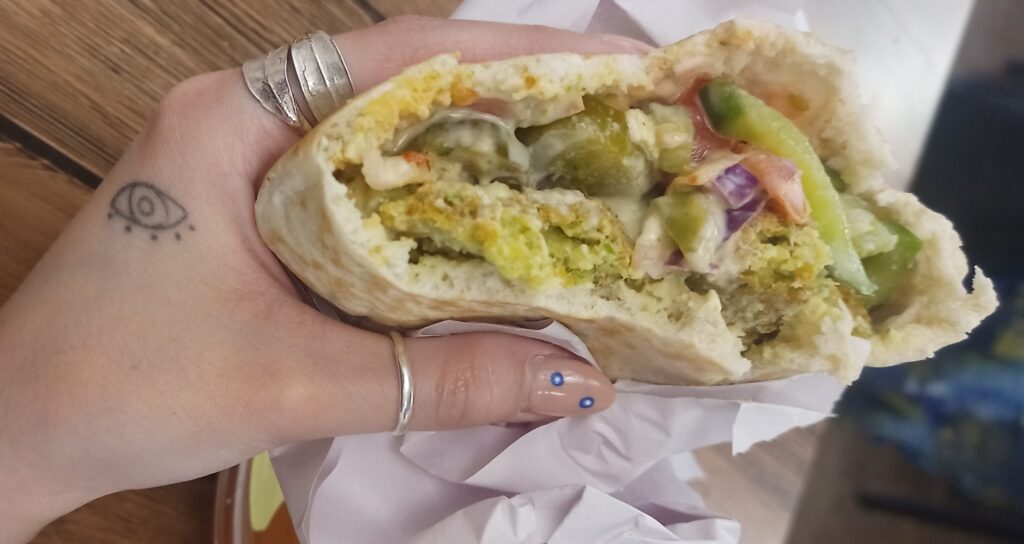
My happy reunion with falafel propelled me to go seek the best, so on good advice, I tried the Falafel Republic in Bierzeit. It was truly out of this world, amazingly light and fragrant. The tiny, old stone room with just 5 tables and an open kitchen, felt cozy, like being at grandma’s place, yet the level of cooking was grand. I ordered a dish of sautéed chicken livers as well, fearing that perhaps I’d not be able to eat the lot, but they were so extraordinarily scrumptious I couldn’t stop. Caramelised with onions, a little crunchy edge around the tender pieces, they were tangy and rich with, I believe, the bright addition of pomegranate molasses.
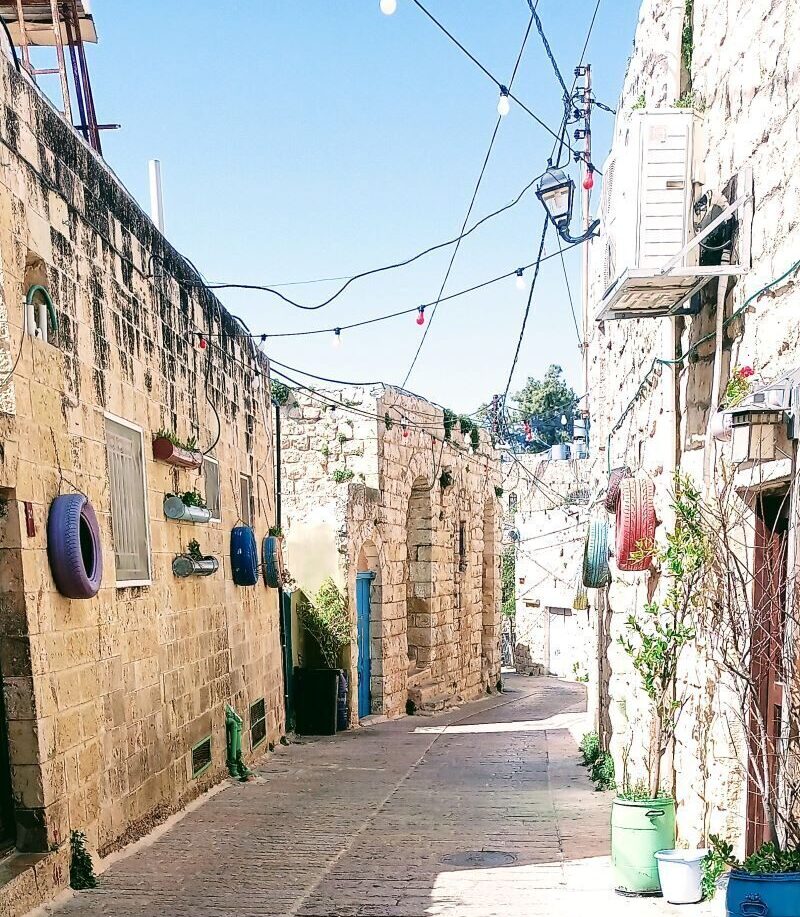
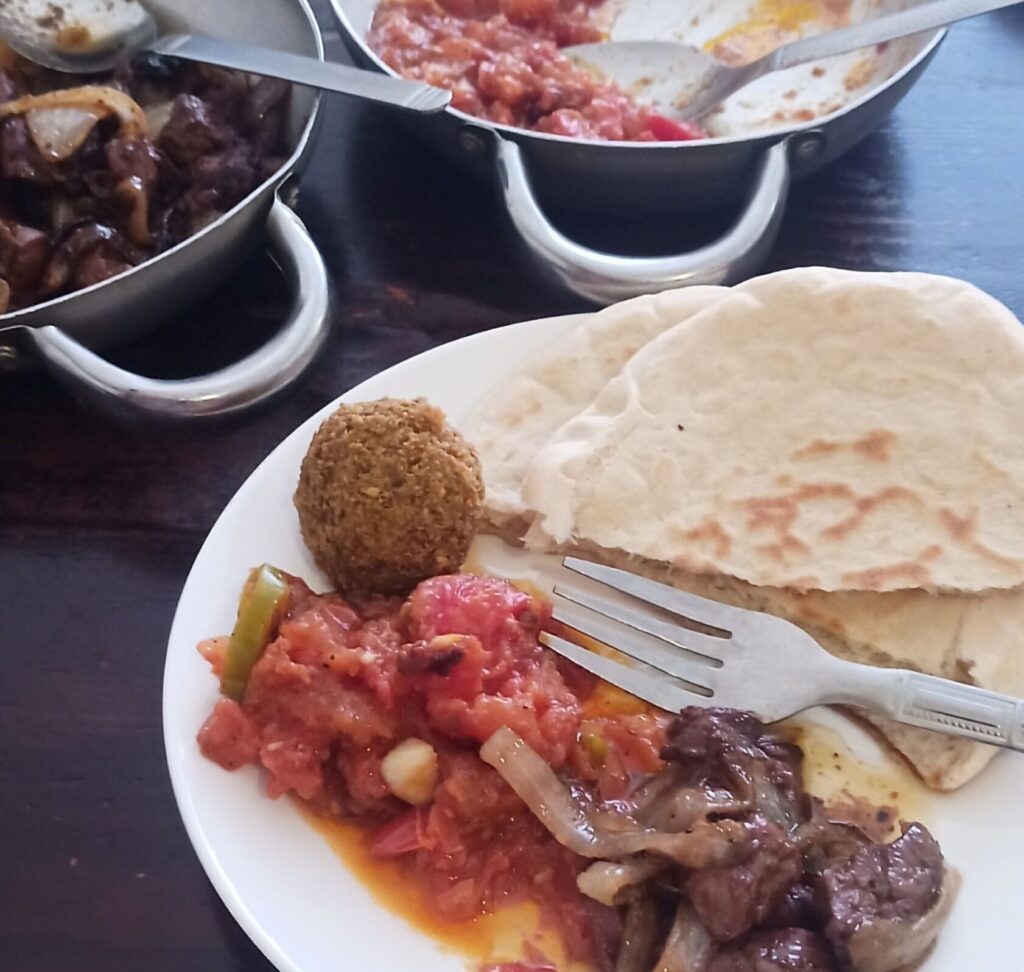
Naseba’s food
I visited Haifa, Akka, Jericho…but it was in the Golan Heights where I experienced the loveliest meal; what was said about Naseba’s food proved true: her exquisite soul food filled me with joy. We were sat together around a fire, American, Arabian, Brazilian, Druze, French, Zionist and Italian, united by the love of good food and culture. Naseba served us a plate with Dawali (grape leaves stuffed with rice and spices), stuffed Cabbage rolls, Kibbeh (bulghur wheat stuffed with grains and lamb), gently spiced lamb kebabs with a delicate hint of cinnamon, rice with toasted vermicelli, a very smoky eggplant Baba Ganush, lentil and grains, and these huge, transparently thin flatbreads, Laffah, that were rolled with lebneh (gorgeous little salted, strained fresh goat cheese balls, kept in olive oil) and lavishly sprinkled with za’atar (origanul syriacum mixed with sesame seeds, sumac and salt).

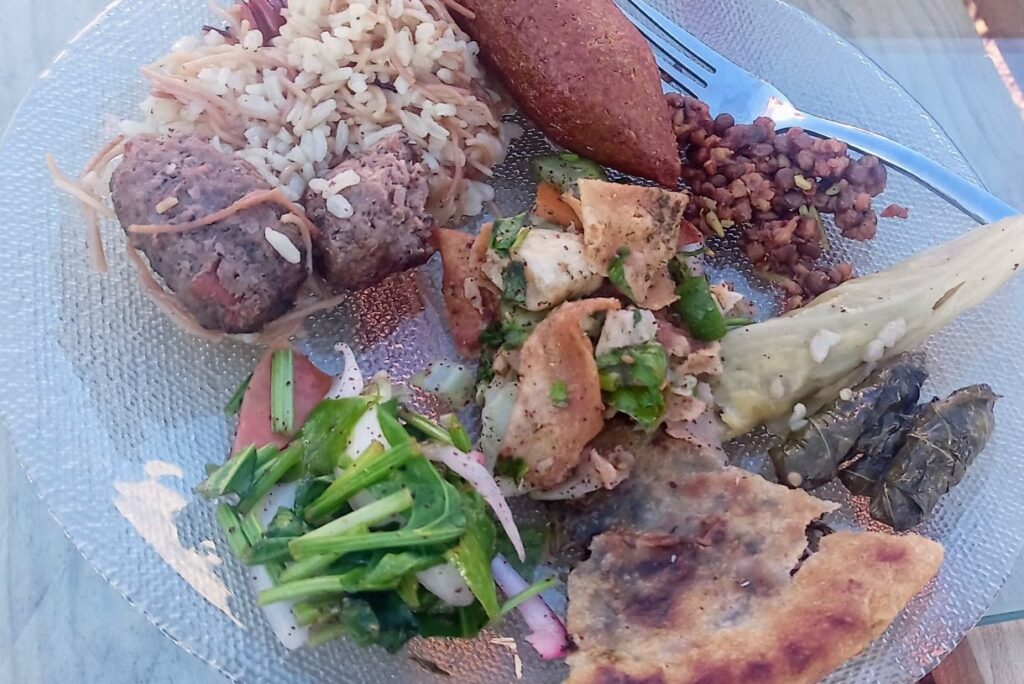
There was also a flat pie stuffed with some richly fragrant wild herbs which really captured my attention. What was this? I’d gone earlier for a walk to see if I could find the highly prized Gundelia, a thistle like plant with stalks that taste like artichoke and asparagus. I didn’t, but what I was shown really blew me away…the same leafy green I used to pick in the fields near Treviso, in northern Italy at the same time of year, just before the Equinox! I’d steam it and eat it by the bushel, it’s rich in iron and minerals and so flavourful. That was what I’d tasted in the pie, and I was so excited to find it again. However, I still don’t know what it is called! (If you do, please tell me!)
More time to spend, more bread to break and a bigger suitcase!
I couldn’t bring those home with me, but I have forever in my mind that flavour. I did bring back a few lovely spices, some from the fascinating store of a fourth-generation spice trader in Haifa. A dried tomato and pimento blend is inspiring my dishes lately, and the freshly ground za’atar) is just heavenly sprinkled on yogurt, grilled vegetables, you name it. My big haul is a fat bag of freekeh, cracked green wheat that’s a little smoked. It’s the most toothsome grain you can imagine and I want it all the time.
I think when I return to Palestine, I’ll have more time to spend, more bread to break and a bigger suitcase. I can’t wait to share again with those loveliest of people.
